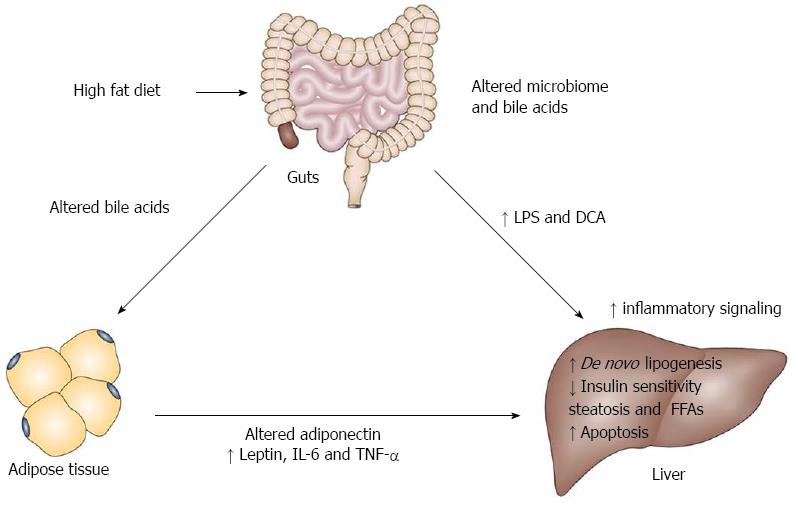Copyright
©2014 Baishideng Publishing Group Inc.
World J Gastroenterol. Nov 28, 2014; 20(44): 16464-16473
Published online Nov 28, 2014. doi: 10.3748/wjg.v20.i44.16464
Published online Nov 28, 2014. doi: 10.3748/wjg.v20.i44.16464
Figure 1 Model illustrating the role of inflammation in non alcoholic steatohepatitis driven hepatocellular carcinoma.
The current literature supports the concept that hepatic inflammation can in part come from dietary changes that promote an altered microbiome to release inflammatory factors such as lipopolysaccharide (LPS) and the inflammatory bile acid deoxycholic acid (DCA). They impact on the liver to activate the innate immune system and a senescence - associated secretory phenotype in hepatic stellate cells. Bile acids can also modulate hepatic inflammation through farnesoid X receptor and TGR5 receptors. The increased adipose mass can produce less adiponectin and more leptin, interleukin-6 (IL-6) and tumor necrosis factor (TNF)-α that can further impact on the liver. The build up of fat and elevated FFAs, induce hepatocyte apoptosis, further amplifying the inflammatory effects. The net effect of the systemic and hepatic inflammation is to support neoplastic growth in the liver. It remains to be determined in appropriate mouse models whether bile acids can influence adipocyte function, non alcoholic steatohepatitis and hepatocellular carcinoma progression.
- Citation: Jiang CM, Pu CW, Hou YH, Chen Z, Alanazy M, Hebbard L. Non alcoholic steatohepatitis a precursor for hepatocellular carcinoma development. World J Gastroenterol 2014; 20(44): 16464-16473
- URL: https://www.wjgnet.com/1007-9327/full/v20/i44/16464.htm
- DOI: https://dx.doi.org/10.3748/wjg.v20.i44.16464









